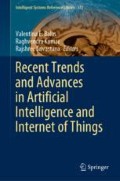Abstract
Electrical impulses generated by nerve firings in the brain diffuse through the head and can be measured by electrodes placed on the scalp and is termed as electroencephalogram (EEG). The artefacts, such as eye blinks etc., in EEG recordings obscures the underlying processes and makes analysis difficult. Large amounts of data must often be discarded because of contamination by artefacts. To overcome this difficulty, signal separation techniques are used to separate artefacts from the EEG data of interest. Some artefacts, such as eye blinks, produce voltage changes of much higher amplitude than the endogenous brain activity. EEG data may be contaminated at many points during the recording and transmission process. Most of the artefacts are biologically generated by sources external to the brain. Improving technology can decrease externally generated artefacts, such as line noise, but biological artefacts signals must be removed after the recoding process. This paper proposes a new technique for removing the artefacts from the EEG signal which uses kurtosis based on difference of Gaussian and Super-Gaussian signal and Spatially-Constrained ICA (SCICA) and Daubechies wavelet techniques. Threshold plays an important role in separating the artefacts from the non-artefact EEG. Otsu’s Threshold is been adopted as the thresholding method in this paper.
Access this chapter
Tax calculation will be finalised at checkout
Purchases are for personal use only
References
Ghandeharion, H., Erfanian, A.: A fully automatic method for ocular artifact suppression from EEG data using wavelet transform and independent component analysis. Eng. Med. Biol. Soc. 5265–5268 (2006) Hyvarinen, A., Erkki, O.: A fast fixed-point algorithm for independent component analysis. Neural Comput. 9(7), 1483–1492 (1997)
Chen, X.H., Peng, H.: Removal of muscle artifacts from single-channel EEG based on ensemble empirical mode decomposition and multi-set canonical correlation analysis. J. Appl. Math. 1–11 (2014)
Teng, C.Z., Wang, G.: The removal of EMG artifact from EEG signals by the multivariate empirical mode decomposition. Signal Processing, Communications and Computing, pp. 873–876 (2014)
Zhao, C., Qiu, T.: An automatic ocular artifacts removal method based on wavelet-enhanced canonical correlation analysis. Eng. Med. Biol. Soc. (EMBC), 4191–4194 (2015)
Islam, M.K., Rastegarnia, A., Yang, Z.: A wavelet-based artifact reduction from scalp EEG for epileptic seizer detection. IEEE J. Biomed. Health Inf. (2015)
PhysioNet-motion artifact contaminated EEG and EEG data (motion artifact). [Online]. http://physionet.org/cgi-bin/atm/ATM
Mijovic, B.V., Huffel, S.V.: Source separation from single-channel recordings by combining empirical-mode decomposition and independent component analysis. Biomed. Eng. 57(9), 2188–2196 (2010)
Soomro, M.H., Yusoff, M.: Comparison of blind source separation methods for removal of eye blink artifacts from EEG. Intelligent and Advanced Systems (ICIAS), pp. 1–6 (2014)
Sweeney, K.T., Ward, T.E.: The use of ensemble empirical mode decomposition with canonical correlation analysis as a novel artifact removal technique. Biomed. Eng. 60(1), 97–105 (2013)
Sweeney, K.T., Onaral, B.: A methodology for validating artifact removal techniques for physiological signals. Inf. Technol. Biomed. 16(5), 918–926 (2012)
Soomro, M.H., Jatoi, M.A.: Automatic eye-blink artifact removal method based on EMD-CCA. Complex Medical Engineering (CME), pp. 186–190 (2013)
Ng, S.C., Raveendran, P.: Enhanced µ rhythm extraction using blind source separation and wavelet transform. IEEE Trans. Biomed. Eng. 56(8), 2024–2034 (2009)
Author information
Authors and Affiliations
Corresponding author
Editor information
Editors and Affiliations
Rights and permissions
Copyright information
© 2020 Springer Nature Switzerland AG
About this chapter
Cite this chapter
Satpathy, R.B., Ramesh, G.P. (2020). Advance Approach for Effective EEG Artefacts Removal. In: Balas, V., Kumar, R., Srivastava, R. (eds) Recent Trends and Advances in Artificial Intelligence and Internet of Things. Intelligent Systems Reference Library, vol 172. Springer, Cham. https://doi.org/10.1007/978-3-030-32644-9_28
Download citation
DOI: https://doi.org/10.1007/978-3-030-32644-9_28
Published:
Publisher Name: Springer, Cham
Print ISBN: 978-3-030-32643-2
Online ISBN: 978-3-030-32644-9
eBook Packages: Intelligent Technologies and RoboticsIntelligent Technologies and Robotics (R0)

